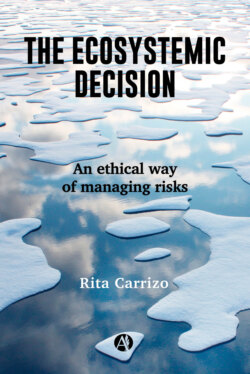Читать книгу The Ecosystemic Decision - Rita Carrizo - Страница 7
На сайте Литреса книга снята с продажи.
1.2 Decisional archetypes
ОглавлениеBearing in mind that all human action starts off as a decision -at least this is what we will distinguish for now- this section explores what we humans know about human decision-making; what we have learned about ourselves as decision-makers. To do this, I find it appropriate to establish a baseline understanding and ask the Spanish dictionary: what is a decision?
As a noun, a decision is defined as the determination or resolution of a doubtful thing. As a verb, “to decide” refers to the act of making a resolute judgement about something doubtful or contestable. It also refers to the action of determining the outcome of something, and the purpose of doing something. It seems interesting to point out that none of the meanings offered highlight the series of considerations that are made about the “doubtful thing” before the decision is made, i.e., they do not speak about the process that leads to such a determination of outcome or purpose.
So, when speaking of decisions, we will say that it is not only the end product -the decision itself- that is relevant, but also the considerations that were made in order to arrive at that decision and the way in which these considerations were made to end up in such a final product. Moreover, since the issue the decision seeks to address is “doubtful”, it seems implicit that the content of the decision will depend on a choice or option made on the basis of the considerations already mentioned.
As you can see, none of these aspects are included in the meanings provided by the dictionary, so it is necessary to extract them through interpretation.
Some readers might question what has been said about the choice required to make a decision, arguing that it is not always a matter of choice and that often “there are no other options left”. Let us look at some examples. Suppose the production manager of an organisation instructs his or her staff to take an inventory of products in process, or the CEO asks middle management to prepare a daily report on sales; or imagine a parent asking his or her child to look after the younger siblings while she or he cooks lunch. In these cases, the boss, manager, or parent offers no other options from which to choose, and the recipient interprets the request as such. Similarly, if someone points a gun at a person in order to make him or her hand over money or perform certain actions, the one looking at the gun might say that he or she sees no other option but to obey. In all these cases, it seems as if the act of choosing does not take place.
However, if we look a little closer, we will be able to observe that the choice of the content of the decision has at least two sides, or values. On the one hand, going down the path that is obvious to the decision-maker and doing what is asked, suggested, or ordered. On the other hand, refusing, i.e., “doing nothing” and leaving the situation in its original state. Neither the boss, the manager, nor the parent offered the option of receiving a refusal -much less the one who points a gun. The “no” path and inaction will always be a possible path for the decision-maker; the fact that it could not be obvious or convenient for him or her does not mean that it is not available as an option. That is why we will say that, when making a decision, there are always at least two options.
